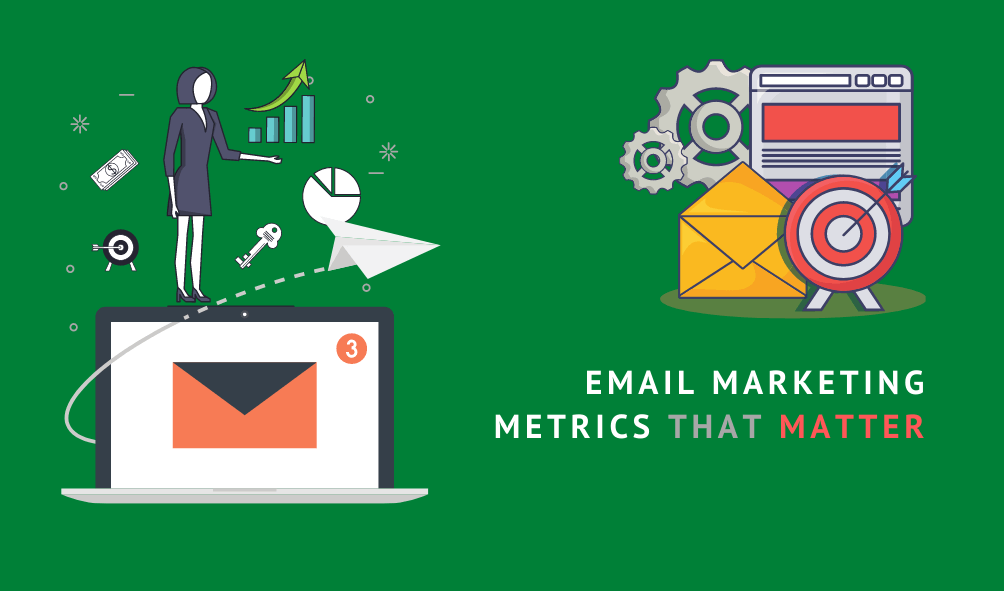The size of your list did not make it, how your list grows did though!
Email Marketing Metrics – Measuring your Success
Are you wondering if your email marketing is really worth it? The size of your mailing list doesn’t matter if you aren’t getting any closer to your goals. You need a reliable method to check your performance and find out what works and what doesn’t. The key to monitoring email marketing is email metrics. As long as you know how to make sense of the numbers, they tell a lot about the success of your campaign. Here are some important email metrics that you should be tracking.
Open Rate
The open rate tells you what percentage of your messages were opened by recipients. This may seem like a great metric because to read your emails your subscribers have to open it first. Unfortunately, technical issues make it unreliable. For it to work, the recipient’s email client must display the images in your mail. Due to privacy concerns, most email clients will not display images by default. So, the reported open rate is far lesser than the actual open rate. To make this worse, some email clients can be set to open messages in a preview. This can again distort the open rate.
Although the open rate is not very unreliable, the trend in open rates over a period of time is useful. It may give an indication of subscriber interest in your campaigns. An open rate above 20% is considered good, but this could vary for some sectors.
Click-through rate (CTR)
CTR tells you what percentage of your recipients clicked a link in your email. CTR is reliable and it’s an important metric to track because it measures interaction. It shows that your message was engaging enough to make the reader click through to your site. For calculating this metric, you can use either total clicks or unique clicks. It does not matter as long as you stick to one of them.
CTR is calculated for individual mails. You can try variations and figure out what works best for your audience. Although it varies from email to email, a general trend of increasing CTR is good. If you see a consistent decline in CTR, you should try to find the reason. Although it again depends on your industry, a CTR of over 10% is good and anything above 20% is excellent.
Conversion rate
It’s nice to have a healthy CTR, but how well are you converting those clicks? Conversion rate is linked to your call to action. It may not be directly linked to money. For example, you may want the visitor to download a free eBook, sign up for a service, buy a product, fill out a lead generation form or click on an affiliate link. If the recipient took the desired action after clicking through from your email, you have a conversion.
Conversion rate tells you what percentage of your recipients took the desired action. There is no benchmark for conversion rate because it depends on your industry and what you are trying to do. But, it will tell you whether things are going according to plan. To measure conversion rates, you have to integrate your email marketing with web analytics. This should be easy with a good email marketing platform.
Return on investment (ROI)
ROI measures the success of email marketing in monetary terms. It tells you by what percentage your investment translated into extra revenue. For example, if you spent $200 on email marketing and generated $1,000 in extra revenue, your ROI is calculated as shown below.
ROI = ($1000 – $200) * 100 / $200 = 400%.
In the example given above, the return from email marketing was 4 times the budget, that is, a return of 400%. The method of calculating ROI can vary. For example, if your business is new and sales are low, getting more sales may take priority over profits. But, if you are running an established business, profit may be your main priority.
Sharing or forwarding rate
Sharing rate is the percentage of recipients who shared your email using the ‘Share’ or ‘Forward’ link. This is an important metric because it tells you about the quality of your message and helps you improve your campaign. Besides increasing your audience, sharing helps you get new subscribers and more traffic.
Effective measurement of the number of emails that users forwarded can be difficult. However if you offer social sharing in your email campaigns it is possible to track much of that activity. If your recipients are sharing your content on their social media channels there is a very good chance you got it right (or incredibly wrong!).
Bounce rate
Bounce rate is the percentage of emails that could not be delivered. Bounces can be hard or soft. A hard bounce is a permanent error. It usually occurs because the destination email address is invalid. A soft bounce is a temporary situation. It usually occurs due to a problem with the recipient’s mail server or mailbox.
You can ignore soft bounces as they resolve on their own. Hard bounces will never resolve. Remove those people from your list before sending the next message. ISPs associate a high hard bounce rate with spammers. Keeping these addresses on your list will lower your reputation and hurt deliverability.
Unsubscribe rate
Unsubscribe rate is the percentage of recipients who decided to unsubscribe using a link or other method provided in your email. An unsubscribe rate below 0.05% is normal and is nothing to worry about. But, a very high unsubscribe rate or a spurt in the rate is a cause for concern. If this happens, review the quality and relevance of your messages.
Like the open rate, the unsubscribe rate is not very reliable. Many people prefer to delete emails instead of unsubscribing. To keep your list healthy, you should periodically try to re-engage inactive subscribers. If you don’t succeed, remove them from your list. This improves deliverability and makes email metrics more realistic.
Spam complaint rate
Spam complaint rate is the percentage of recipients who marked your message as spam. You won’t get too many spam complaints if you follow best practices. Use double opt-in, include an unsubscribe method and honor unsubscribe requests promptly. Occasional spam complaints are unavoidable and are no cause for worry. If it’s over 0.05%, it can hurt your reputation with mail service providers. Remove the people who complain from your list before sending the next mail.
List growth rate
As the name suggests, the list growth rate is the percentage by which your list grows during a given period of time. Here is an example.
Number of subscribers at the start of the year = 10,000.
Number of subscribers at the end of the year = 12,000.
Yearly list growth rate = (12,000 – 10,000) * 100 / 10,000 = 20%.
The growth rate can be positive or negative. To keep it positive, you must add more subscribers than what you lose due to unsubscribe requests, spam complaints and hard bounces.
Email metrics give important feedback and are crucial for successful email marketing. They help you keep your campaigns on track. Good email marketing platforms have most of these metrics built-in. Without metrics, email marketing is like running blindfolded. You will need a lot of luck to reach your destination.
Inbox Placement Rate
Not the most reliable of metrics on the most part as you will often be using guess work. There are services that will provide estimates based on AI, focus groups, seed testing and similar, but their accuracy is up for question.
However Tencent, Yandex and Gmail will give you very accurate data about what percentage of your mail is getting filtered or not making it to the inbox. This is useful if you have a large number of subscribers with one of those vendors but you are not otherwise out of luck. Check our next my bonus email marketing metric that not enough business take account of.
Open Rate by Recipient ISP/Domain
OK this make by a little geeky for some, but it is a great way to identify potential issues at the main ISPs you send email to. Does your email marketing platform let you see open rates by ISP or Domain? If you have a consistent open or CTR rate across ISPs and notice an anomaly with one, it is a red-flag indicating the possibility of a delivery issue (or also help you identify robo clicks on your email campaigns!).
Wrapping Up
What is your favourite email marketing metric to measure, what is the most important to your business? Did I miss some? Did you learn of any new metrics? You can let me know in the comments!







